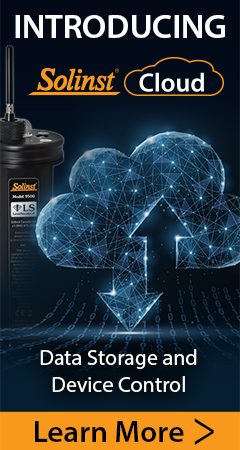MODBUS is a serial communications protocol designed to allow a number of different devices to communicate with a single MODBUS controller. This User Guide focuses on the Solinst Model 301 Water Level Temperature Sensor (WLTS) for use as a device in a MODBUS set up. Configuration, communication, installation and description of the MODBUS protocol are included.
1.1 WLTS MODBUS Interface Overview
The WLTS uses the RS-485 serial interface for communicating using MODBUS protocol.
To connect the WLTS to the MODBUS customer equipment, you must ensure correct wire-to-wire connection, including a continuous external power supply to the WLTS. Power supplied must be between 10V and 30V DC. The sensor connects to a Communication Cable (vented or non).
The communication settings always use Serial, RTU mode, and 8 data bits. The MODBUS registers do not provide a means of changing these communication settings.
A simple PC Software Utility is used to specify the device address, Baud rate, and Parity and Stop Bits. If not, the WLTS will power up with a default MODBUS device address of 1, Baud rate of 19,200, Even Parity and 1 Stop Bit.
The WLTS only uses MODBUS functions that operate on registers (16 bits) and transfers data in Big Endian. The WLTS only supports holding registers, and consequently only MODBUS functions that deal specifically with holding registers. The MODBUS controller must be able to recognize floating point data types.



